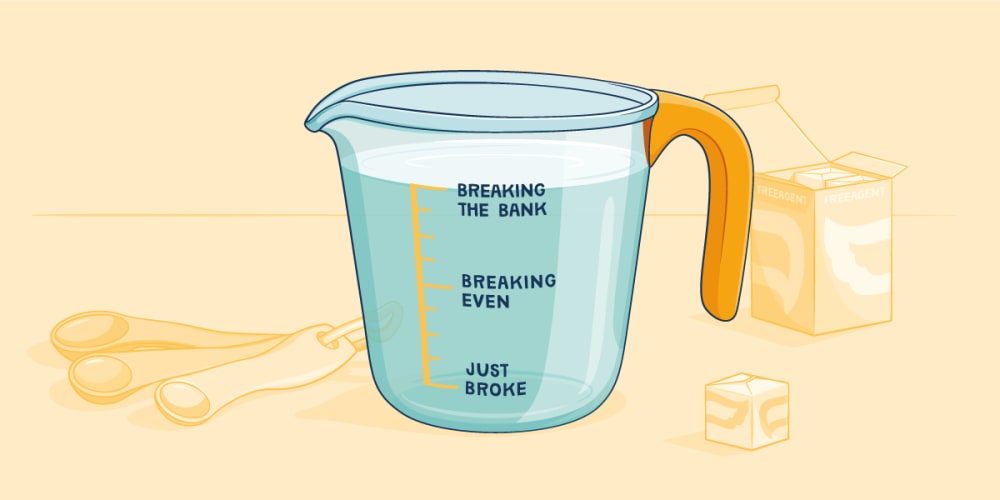How to find out if your small business is profitable

Your business might have plenty of customers and be racking up healthy sales, but is it actually profitable? Finding out how much money you’re making isn’t always as simple as you might think. Here’s how to determine if your business is profitable - and what to do if it isn’t.
Getting to know your profit totals
You might assume that being profitable simply means being in the black, but there’s actually a bit more to it than that. There are three different kinds of profit that you should be aware of when you run a business.
1. Gross profit
Although this is relevant to all businesses, you might be particularly interested in your gross profit figure if your business sells physical goods. Gross profit is a business’s income minus its day-to-day outgoings that relate directly to making particular sales. These outgoings are sometimes referred to as ‘costs of sales’ or ‘costs of goods sold’ and would include costs such as raw materials to make the goods you sell or the rent of the location where your goods are made.
A formula for calculating your gross profit is:
Income from sales - costs of sales = gross profit
2. Operating profit
Operating profit is used to determine how profitable a business is on a day-to-day basis. It’s calculated by taking the income that a business receives from sales and subtracting the costs of sales and other administrative costs involved in the running of the business.
Unlike net profit, which we’ll talk about below, when calculating your business’s operating profit you don’t take into account any money entering or leaving a business through taxes or interest payments.
A formula for calculating your operating profit is:
Income from sales - costs of sales - administrative costs = operating profit
3. Net profit
Different businesses sometimes define net profit in different ways, but this figure is usually the bottom line: a business’s total income minus its total day-to-day running costs. As such, your business’s net profit calculation will usually include both all of its costs and all of its income.
Some businesses include tax and interest with their costs when calculating net profit; others don’t. If you’re not sure what the best formula is for your business, speak to your accountant for advice.
A positive net profit figure for the year will usually mean that your business is making a profit, whereas a negative figure means your business has incurred more costs than it made in earnings and is making a loss.
A formula for calculating your net profit is:
Total income - total day-to-day running costs = net profit
Don’t get mad, get even
If you calculate your business’s profit totals and discover that you’re making a loss, you should take note of your break-even point. This is the amount your business needs to earn in sales in order to cover its running costs.
By subtracting your expected day-to-day running costs from your future sales projections, you can get an idea of when you’re likely to break even or turn a profit.
Once you know your break-even point, you might want to look at how you can increase your profitability and reach it faster. Here are a couple of ideas to get you started:
1. Focus on your most profitable customers
The total value of sales you’ve made to a customer is usually a good indicator of their importance to your business. However, it’s often worth assessing the customer’s profitability in terms of both sales revenue and the cost of supplying your products or services to them.
For example, a big customer in another part of the country may contribute more than a local customer in terms of sales, but the cost of shipping goods to them may mean you’re actually making less money in the long run. If you can focus your energies on increasing sales to your more profitable customers, you could be on to a winner.
2. Analyse where money is going out of your business
If you feel like sales are soaring but you aren’t making the profit you expected, make sure you keep tabs on the money leaving your business. By looking at your outgoings, you may find that you’re spending more than you thought in areas such as costs of sales or administrative expenses - and then you can consider what action to take to remedy this. If you use FreeAgent, you can download your spending categories report to examine this area in detail.
Calculate your profit using FreeAgent
FreeAgent’s dashboard can show you exactly how much profit you’re making in an easy-to-read snapshot view. Try a 30-day free trial of FreeAgent to see for yourself.


